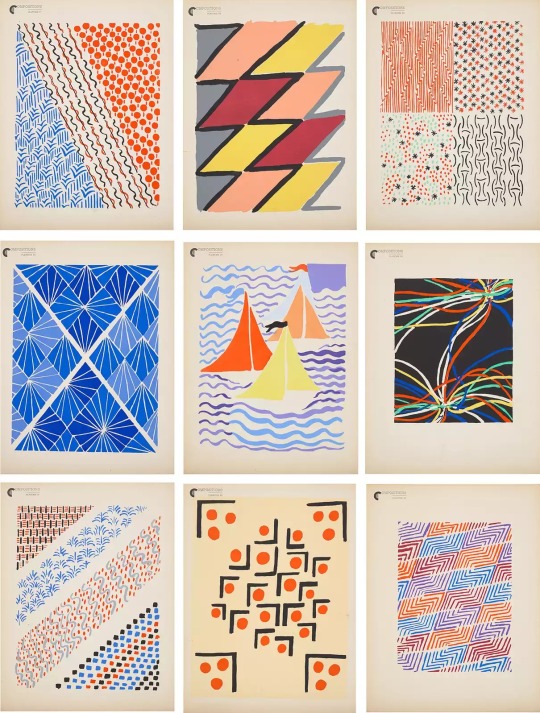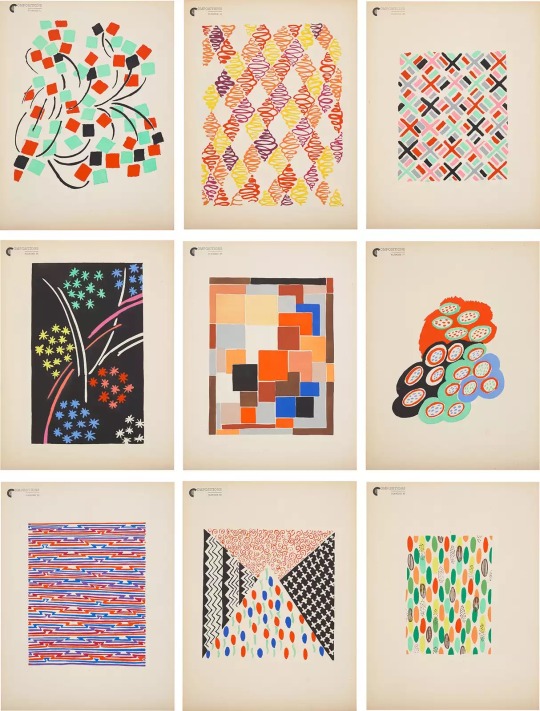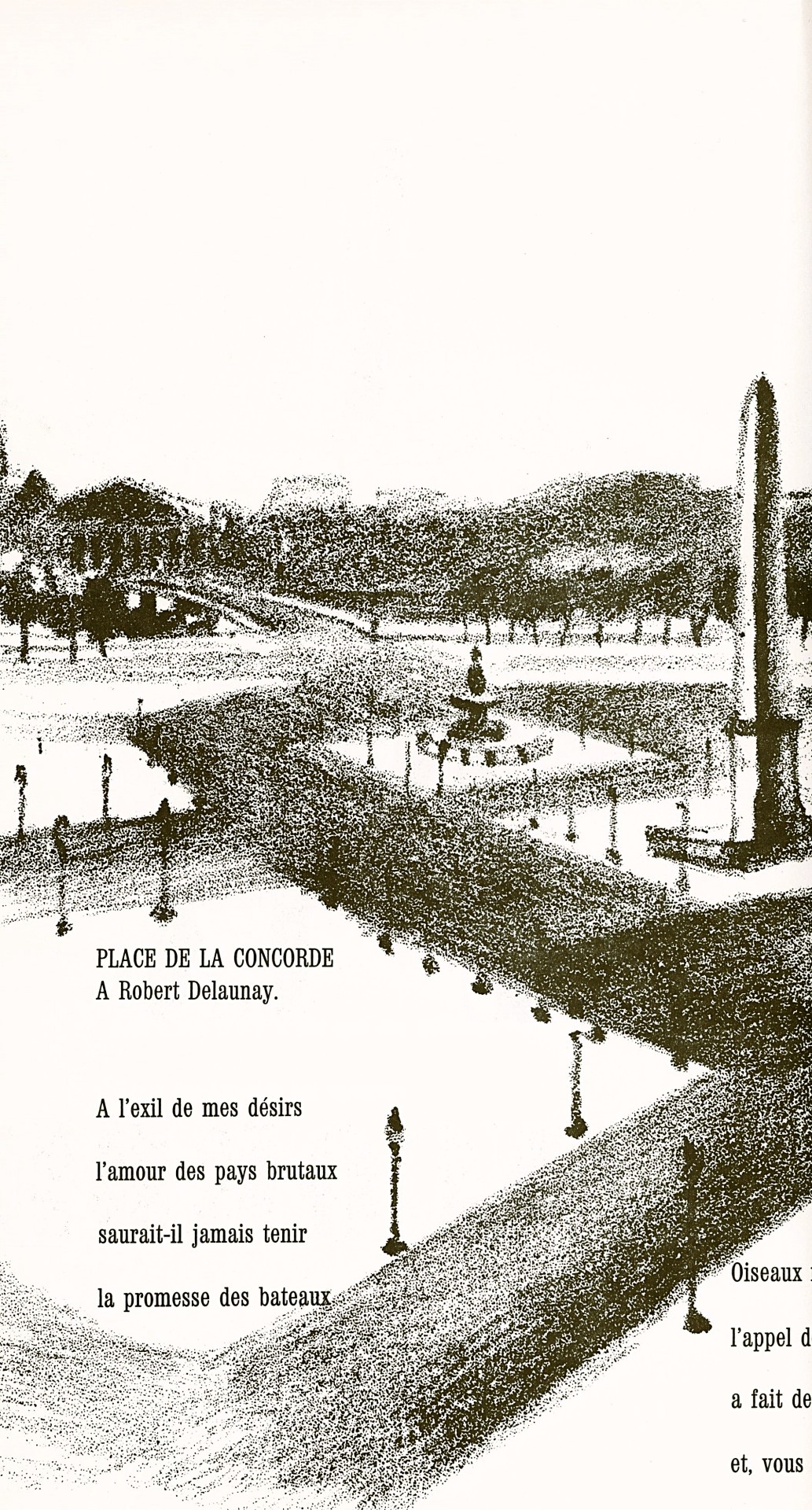#Orphisme
Explore tagged Tumblr posts
Text

Robert Delaunay
Manège de cochons, 1922
Centre Pompidou, Paris
22 notes
·
View notes
Text

Orphic ceremonial bowl (4th century C.E.) showing sixteen naked adepts, eight men and eight women. In the center is the Orphic Cosmic Egg or Omphalos, around which a dragon is coiled. The underside of the bowl shows four Eros figures and the following lines:
Gods, for it whirls through the infinite, great Olympus. Shining Zeus, may the cosmos be born. Hear from afar the swirling fire-wreathed circle. Heaven and earth were one form.
#orphism#orphic mysteries#orpheus#hellenism#hellenic paganism#philosophy#mystery religion#classical philosophy#orphic hymn
704 notes
·
View notes
Text

František Kupka (1871-1957) — Around a Point [oil on canvas, ca. 1930]
231 notes
·
View notes
Text

Sonia Delaunay
Solar Prism (1914)
529 notes
·
View notes
Text

I couldn't become your Orpheus.
#eurydice#orpheus#hades#orfeo#euridice#literature#music#ballet#dionysus#zagreus#apollo#orphism#orphydice#oil on canvas#oil painting#artists on tumblr#hadestown#orfeo ed euridice#lit#love#musician#museum#barnes and noble#book#books#animal#animals#art#artwork#orphic mysteries
125 notes
·
View notes
Text
perhaps a controversial helpol opinion but I don't think the orphic hymns are a good for 101 guides. orphism is a sector of scholarship on its own, with a particular context (especially when you get into the "orphism never actually existed" side of it) and the overall uniqueness of it. it is so different from most other sides of helpol I imagine it only confuses people--it did for me, particularly with the syncretism.
I think a lot of people are recommending them because they're hymns, not for the actual content and theology of them, since I doubt most people are going for that heavily syncretic eventual upg based practice. I see it more as an extra pursuit, akin to me reaching into Thessaly's religious practice for Enodia.
#its like telling people who are into rompol to read the umbrian tablets. its not going to really be helpful?#most people aren't going for an “orphic” bend to the religion.#and theres huge debate on orphism esp with some scholars basically posing it as an ancient mlm lmao#just. its niche and different? most people are going to end going for classical helpol#not hellenistic etc.#hellenic paganism#dragonis.txt#paganism#pagan#hellenic polytheism#helpol#hellenic polytheist#hellenic pagan#hellenic community#though its just my opinion lmao. im literally just some guy
111 notes
·
View notes
Text




Sonia Delaunay
Compositions, Couleurs, Idées, 36 plates
1930
#modern art#abstract#sonia delaunay#delaunay#compositions#textile art#textiles#abstract art#ideas#colors#textile#orphism#french artist#french legion of honor#geometric abstraction#Académie de La Palette#robert delaunay
1K notes
·
View notes
Text
abstract compositions in amber phosphor 5 - 14
2024 / 2025
early 90s My First Sony video drawing toy on a Samsung monitor from the early 80s










68 notes
·
View notes
Text

Polychrome terracotta sculpture of the god Dionysos, holding an egg and a rooster. The unusual attributes may hint at a connection to Orphism, which held that the first deity, Phanes or Protogonos ("First-Born"), was hatched from a cosmic egg. Adherents of Orphism saw humankind as the descendants of Dionysos (under the name "Zagreus"), created when the Titans devoured the young Zagreus and were then struck by Zeus' thunderbolt. Artist unknown; created in Tanagra, Boeotia (an important center of terracotta production) ca. 350 BCE. Now in the British Museum.
#classics#tagamemnon#Ancient Greece#Greek religion#Ancient Greek religion#Hellenic polytheism#Dionysus#Dionysos#Orphism#art#art history#ancient art#Greek art#Ancient Greek art#Classical Greece#Classical Greek art#Boeotia#Boeotian art#sculpture#terracotta#British Museum
738 notes
·
View notes
Text















Milestone Monday
Orphic Views
On this day, March 31, 1889, the Eiffel Tower officially opened. Designed by engineer Gustave Eiffel (1832-1923), it was constructed between 1887 and 1889 as part of the 1889 Exposition Universelle (World's Fair) held in Paris to celebrate the 100th anniversary of the French Revolution. Initially, the tower faced significant criticism from prominent Parisians and artists who deemed it an eyesore. Nonetheless, it swiftly became a cherished symbol of Paris and France, attracting millions of visitors each year. The tower has three levels, with restaurants on the first and second levels and an observation deck on the third, offering breathtaking views of the city. Today, the Eiffel Tower stands as one of the most recognizable landmarks in the world.
The images shown are from Les Tours Eiffel by Robert Delaunay. This work features artwork created by Robert Delaunay (1885-1941), along with previously unpublished poems by renowned and influential poets of the early 20th century. It includes a preface by Jean Cassou (1897-1986), the first director of the National Museum of Modern Art in Paris, who was also a French art critic and poet. It was printed in an edition of 1,150 in Brussels in 1974 by the team of Robert de Velder.
The Jacques Damase Gallery published this work in Paris in 1974. Jacques Damase (1930-2014) founded his publishing house in 1948, making him the youngest publisher in the world at the time, at just 17 years old. Under his direction, the gallery became known for its dedication to avant-garde literature and art, helping to promote the works of both established and emerging artists. This collection stands as a testament to the vibrant dialogue between visual art and literature during a transformative period in European cultural history.
Some of the poets in this collection are notable for their ties to surrealism. French writers and poets André Breton (1896-1966) and Philippe Soupault (1897-1990) co-founded the Surrealist movement, aiming to explore the unconscious mind and challenge the conventional boundaries of art and literature. Guillaume Apollinaire (1880-1918) is regarded as one of the leading poets of the 20th century and is credited with coining the terms “Surrealism,” “Cubism,” and “Orphism,” showcasing the intersection of visual art and poetry in contemporary movements. Louis Aragon (1897-1982), a French novelist, editor, and poet, was one of France's prominent voices in the Surrealist movement and was deeply involved in both literature and political activism, often reflecting these themes in his works.
Other notable poets included in this collection are Jean Arp, known for his contributions to both Dada and Surrealism; Blaise Cendrars, whose adventurous spirit and modernist style reshaped poetry; Tristan Tzara, a founder of Dada who sought to disrupt traditional artistic norms; Joseph Delteil, whose work often focused on the themes of nature and humanity; and René Crevel, whose works often depicted existential themes.
Robert Delaunay (1885-1941) was a French artist who co-founded the Orphism art movement, which emphasized the use of color and light to evoke emotion and create a sense of movement. Guillaume Apollinaire noted the musical quality in Delaunay's work, coining "Orphic Cubism" or "Orphism." This name draws inspiration from the Greek god Orpheus, renowned for his ability to captivate animals with enchanting music played on the lyre. Delaunay saw the Eiffel as a symbol of modernity and masculinity. He was among the first artists to focus his work on this iconic landmark, portraying it numerous times in his work, including his famous series of paintings that capture its dynamic forms and colors.
-View more Milestone Monday posts
--Melissa, Special Collections Library Assistant
#milestone monday#milestones#eiffel tower#paris france#worlds fair#french revolution#Les Tours Eiffel by Robert Delaunay#robert delaunay#art#poetry#Jean Cassou#The Jacques Damase Gallery#Jacques Damase#André Breton#Philippe Soupault#Guillaume Apollinaire#surrealism#surrealist art#cubism#orphism#Louis Aragon#visual art#jean arp#dadaism#blaise cendrars#tristan tzara#joseph delteil#rene crevel#modern art#rober de velder
46 notes
·
View notes
Note
What is your favorite obscure Greek mythological fact
Hm, probably the Orphic fragment that says that Persephone was born with a monstrous appearance (fragment 87 according to Athanassakis, fragment 58 in the translation of Otto Kern’s compilation of fragments at HellenicGods.org):
…"of the daughter of Zeus, whom he begat of his mother Rhea; or of Demeter, as having two eyes in the natural order, and two in her forehead, and the face of an animal on the back part of her neck, and as having also horns, so that Rhea, frightened at her monster of a child, fled from her, and did not give her the breast (θηλη), whence mystically she is called Athêlâ, but commonly Phersephoné and Koré"…
It's so totally different from all other versions that only describe her as very beautiful (as goddesses tend to be). Sometimes I regret that I didn't give my Persephone horns.
128 notes
·
View notes
Text






























The suffering and death of the god Dionysus at the hands of the Titans has been considered the central myth of Orphism. According to this myth, the infant Dionysus is killed, torn apart, and consumed by the Titans. In retribution, Zeus strikes the Titans with a thunderbolt, turning them to ash. From these ashes, humanity is born. In Orphic belief, this myth describes humanity as having a dual nature: body (Ancient Greek: σῶμα, romanized: sôma), inherited from the Titans, and a divine spark or soul (Ancient Greek: ψυχή, romanized: psukhḗ), inherited from Dionysus. In order to achieve salvation from the Titanic, material existence, one had to be initiated into the Dionysian mysteries and undergo teletē, a ritual purification and reliving of the suffering and death of the god. The uninitiated, they believed, would be reincarnated indefinitely.
God as Dionysus Part 1 // Part 2
#spn#spn meta#web weaving#the orphic egg#the black snake and the egg#greek mythology#orphism#orpheus#dionysus#supernatural#spn parallels#jack kline#amara spn#amara#chuck shurley#the empty#castiel#orpheus and eurydice#the bacchae#godstiel#lucifer spn#leviathan!cas#tfw 2.0#tfw#team free will#spn and religion#spn and mythology
28 notes
·
View notes
Text

František Kupka (1871-1957) — Whirlwind [oil on canvas, 1923/1924]
168 notes
·
View notes
Text

Sonia Delaunay
Discs (1968)
421 notes
·
View notes
Text
who was zagreus?
hey y'all, on the post "who are the chthonic deities?" i got a comment asking about Dionysus not being included in the list. ever since then i've been thinking a lot about doing more research on the god Zagreus, who Dionysus is a reincarnation of.
Zagreus, the main character of the video game series Hades, is very different to the mythic Zagreus. mostly in the way that there really wasn't a lot of lore about Zagreus, at least not the same level as Dionysus. most of his stories come from Orphism, or the cult following of Orpheus.

DOMAIN: god of pitfalls, game hunting, and chthonic sacrifices
BIRTH AND DEATH: before she is given to the Underworld, Demeter hides her daughter Persephone away in a cave to ward off her many suitors. however, Zeus, as is typical of his mythic self, changes form into a drakon (a dragon-serpent), and makes love to her, conceiving the horned child Zagreus. the infant is then brought to Mount Ida, where he is to be raised in much the same way as Zeus himself. even as a child, Zeus takes a liking to Zagreus and whisks him away to Olympus, intending him to be his heir. there he is allowed to climb the heavenly throne and wield Zeus' lightning bolts.
however, Hera then becomes jealous, and incites the Titans to kill him while she distracts the boy with toys. the Titans then chop him to pieces, and in some stories, they then cook and eat the corpse.
Zagreus is also identified as the son of Hades and Persephone, however, and other sources use Zagreus and Hades interchangeably. whether this is a separate deity from Orphic Dionysus-Zagreus or not, the two are now intrinsically linked.
REBIRTH: Zeus, finding out about Zagreus' death, enacts his rage on the Titans with great rain and lightning, and blasts them apart. from these remains, the Orphics said, humanity arose (giving us the evil nature of Titans and good nature of Gods). Zeus then goes to rescue what he can of Zagreus' remains (or Athena does), and all that is left is his heart. there are many different versions of what happens next, whether Apollo is given the remains to be buried and Zagreus is reborn as Dionysus by Rhea/Demeter OR Zeus makes a potion of what is left of his son and gives it to Semele, who births Dionysus.
Dionysus' association with Zagreus would further explain his ability to go and bring people back to life, including his mother Semele and wife Ariadne.
SYNCRETISM: Dionysus-Zagreus is often compared to Osiris, and his rebirth with the help of Isis (who is associated as Demeter). the posthumous conception of Horus, as well, may relate to the "second birth" of Dionysus from Semele's dead body. there is further evidence relating the mysteries of Osiris/Isis and the mysteries of Dionysus/Demeter.
SOURCES: theoi.com wikipedia britannica
#hellenic deities#hellenic pagan#hellenic polytheism#hellenic worship#hellenism#helpol#ancient greece#ancient greek#chthonic deities#greek gods#chthonic#hades#persephone#dionysus#dionysos#orpheus#orphism#hellenic paganism#greek deities#greek mythology#ancient greek mythology#deity#deity worship#deity work#deities#paganism#polytheism#pagan#pagan witch#paganblr
37 notes
·
View notes
